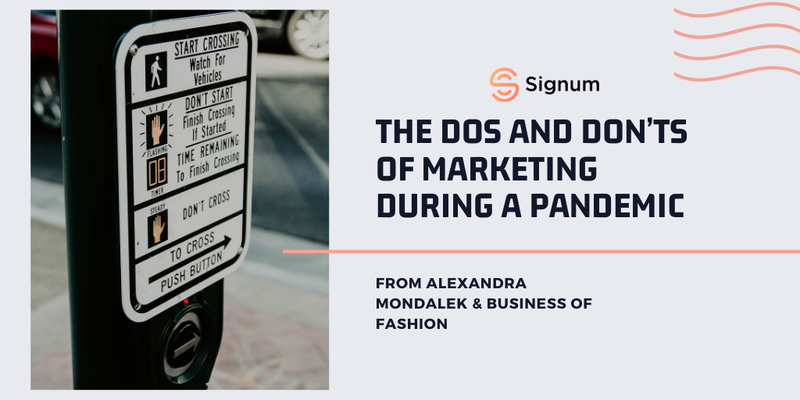- How It All Started
- A Scenario Where AI Initiatives Fail
- 1. The Problem is Not Defined
- 2. The Data Request for AI is Inaccurate or Non-Existent
- 3. All Incorrect Predictions are Assumed to be of Equal Importance
- 4. Decisions Making Lacks Granularity
- A Successful Scenario for AI Initiatives
- 1. Teams Identify the Problem
- 2. Teams Identify Missing Data
- 3. Interpret the Results and Evaluate the Prediction Risks
- 4. Data Scientists Work on Getting This Data
- 5. Map Data into a Granular Marketing Decision
- 6. Iterate
- Wrapping Up
How Marketing AI Can Be Misleading You and Why Total Automation is Still a Work in Progress
September 28, 2021 6 min. read

Contents:
Try AI-Driven Insights
Monitoring for Free
Discover new business ideas and growth opportunities using
our AI-powered insights monitoring tool
Today marketing AI is becoming a market standard, and companies invest in it as a part of their martech. But why do some businesses that adopt even a simple version of AI software get better results than those who allocate enormous budgets and invest in dedicated technical teams to build sophisticated AI systems? Spoiler — it doesn’t have as much to do with AI as it has to do with interpreting data results, critical thinking and decision-making.
An insightful article by HBR takes a fresh look into why businesses fail to improve the accuracy of their decisions with AI. We’ve decided to share the insights with you.
How It All Started
To get what this is about, let’s head back to the era before AI became a part of the marketing world. Back in the day, marketers used to rely on their previous experience and gut instinct. There was no data. Well, at least not as much data and definitely not real-time. And because much of marketers’ work was not data-proven, the decision-making process was more opinion-based and collaborative. Then, all of a sudden, data-powered software came into use. And instead of merging data and the good old decision-making process techniques, marketers started justifying their decisions purely with data, thus letting data take over the problem-solving, debate-based teamwork.
And more than data is oftentimes used in a very simplistic way. Imagine that you’ve collected the data about, let’s say, the amount of money each customer brought to the company over a specific time period. As a result, you have a list of the most and the least profitable customers and then decide what can be done to improve the numbers. Whatever the decision is, if it is based purely on data and not on more strategic business goals, it might not prove to be successful. Why? To get the answer, please keep reading because today, we will sort through it all and roleplay two scenarios — good and bad.
A Scenario Where AI Initiatives Fail
1. The Problem is Not Defined
This usually means that you don’t know what you want to achieve, why you want to achieve it, or how you are going to do it with or without AI. Why does this happen?
As simple as this — marketers don’t ask themselves the right questions. Most of the time, their questions are either too broad or address a problem that will not lead to the desired outcome even if solved. Let us give you an example.
Imagine using AI customer scoring software that can rank customers likely to buy from the most profitable to the least profitable customers. Is that useful to you? Not really. What could be more helpful is for AI to tell you which customer segment is most likely to respond positively to price decrease, promotions or discounts. In other words, a simple prediction of who might hypothetically become your customer is less valuable than the underlying information about whether your planned actions can change their behaviour or not.
2. The Data Request for AI is Inaccurate or Non-Existent
Thus, marketers either direct data scientists in the wrong direction or, even worse, don’t direct them at all. As a result, the data team is generating predictions they are most excited about, assuming that they will be helpful for the marketing team.
So, for example, you have an app and data scientists use AI to predict what actions users will perform there — which elements will be clicked on and which won’t. Can this information be useful for marketers? It might be, if it is driven by their marketing goal, but it will be useless otherwise.
The problem is as old as time itself — each department does its job, and even if the job is done well, there’s a high chance the outcome will be meaningless just because their work processes and tasks are misaligned.
3. All Incorrect Predictions are Assumed to be of Equal Importance
This one has a lot to do with the risk evaluation process. Predictions are by their very nature uncertain, even if they are AI-based. But the point is — marketers do not always compare the value of being right with the costs of being wrong, and they assume all prediction mistakes will break the budget equivalently.
For example, you are trying to reduce the churn rate. For that, you launch a customer retention email campaign sending the promotional emails to those customers that AI detected as most likely to leave. The success of your campaign would probably be measured by the number of customers that renewed their subscription or repeated the purchase. The mistake here is that you don’t consider the entire picture, including a fair estimation of both potential outcomes given a targeted email campaign versus not targeting them at all.
Now you might be wondering how to get it right. Don’t worry. We’ll show you a successful framework to follow.
4. Decisions Making Lacks Granularity
The ability of AI to provide you with detailed data that you can use to make more granular decisions across all time periods (including real-time) is unfortunately not often recognized by marketers. Let’s check out an example.
Suppose you are working on the dynamic price model that will help you sell out your products or services at the “best” price (i.e. a fair approximation for both seller and buyer). Airlines, transport companies and hotels have made this model their own. And it’s a task that is a cakewalk for AI, with up-to-the-minute price updates an easily automated solution. The big difference is that most marketing teams still stick to qualitative decision making on a weekly basis.
A Successful Scenario for AI Initiatives
Now that you know what not to do, we are happy to give you a framework broken down step-by-step that, if used, can boost your AI-based marketing processes.
1. Teams Identify the Problem
The keyword here is ‘teams’ because only by collaborating can marketers and data scientists develop a solution that will bring results. The questions these teams should find answers to are “What problem are we trying to solve and what very specific result do we want from our actions?”
Let’s get back to our example about customer scoring. So if you just ask AI to categorize customers into particular segments from the most profitable to the least profitable, then the conclusions will likely be too vague. At the end of the day, you need to know if your marketing campaign adds value or not. So what if you narrow your task to identifying customers that are more likely to buy after receiving a promotion? The key is to focus on the result.
2. Teams Identify Missing Data
At this step, teams must focus on the unknowns to fill in the knowledge gaps that stop them from solving the problem. The questions worth asking are:
• What opportunities do we miss because of the lack of data?
• What data is needed to get things into motion to solve the problem?
In our example about lead scoring, you don’t need to predict customer profitability; rather the missing piece of the puzzle is who is likely to buy after getting your promotion. So if you ask AI to identify these customers, you will know who to spend your marketing dollars on and start acting towards the solution.
3. Interpret the Results and Evaluate the Prediction Risks
When the data is retrieved, a marketing team can start analyzing it. The following questions are really helpful:
• What is the cost of making a mistake?
• What are we losing in our current decision making approach?
Imagine that in our example about reducing the churn rate, you expand your analysis and take into consideration such outcomes as:
• customers leaving whether they get a promotional email or not;
• customers repeating a purchase even if they don’t receive a promotion;
• customers leaving because they don’t receive a promotion;
• customers repeating a purchase if they receive a promotion.
In the first and second cases, you waste your marketing dollars. Whilst the third case creates missed opportunities. And the fourth one shows the profit that you receive by spending the budget.
4. Data Scientists Work on Getting This Data
Having been given a straightforward task (what data is needed), data scientists can start figuring out how this task can be solved. That is to say, set up AI software so that it gives these predictions.
5. Map Data into a Granular Marketing Decision
Given the initial business problem or goal, all the data retrieved, and all the inaccuracies and risks weighed, a marketing team can finally adjust its initiatives. Ask yourself:
• Do the results retrieved by AI align with our initial business goal?
• Can I change the situation by making decisions more frequently?
In our example about the dynamic price model, your goal is to sell as much and get as much profit as possible. Then, given the power of AI predictive ability and automation, you can easily implement this price model in real-time, updating product prices on your website every hour instead of waiting for a weekly meeting.
6. Iterate
We should always keep in mind that we don’t live in an ideal world where everything goes as planned. Even having all the possible outcomes reviewed carefully and thoughtfully, be ready to change and adjust.
Wrapping Up
To make predictions more reliable, your ultimate goal should be combining the qualitative nature of a team-based decision-making process with the quantitative power of AI software. On top of that, whatever your forecasting goals are, AI solutions should be aligned within and between marketing and tech teams.
More useful content on our social media:
